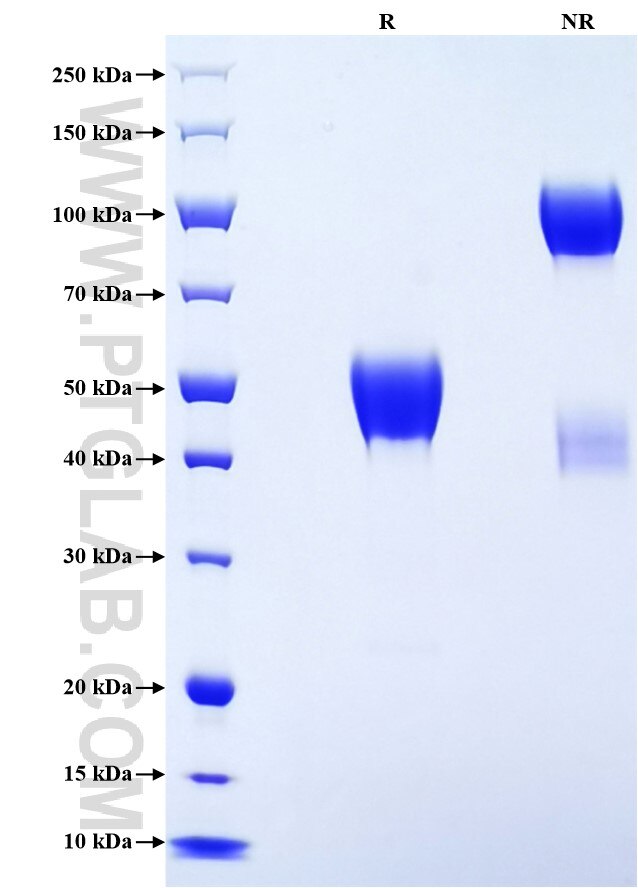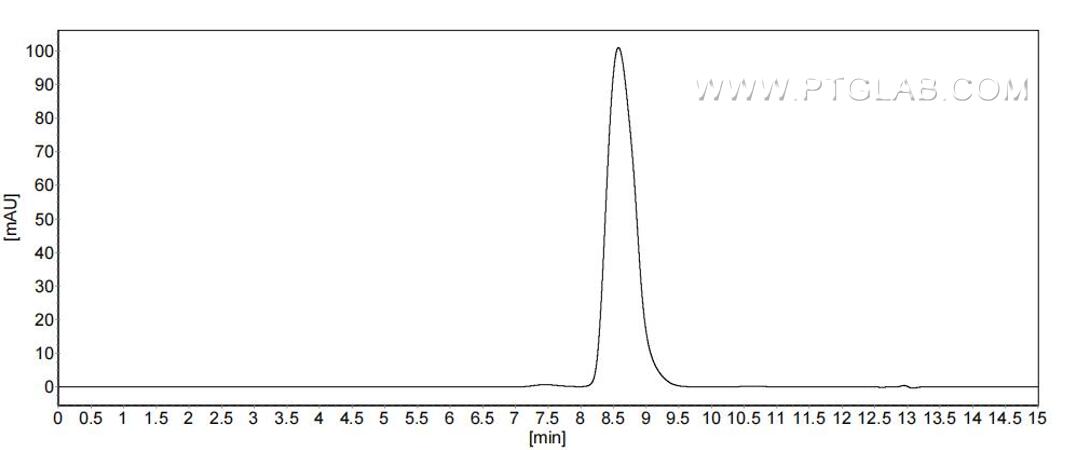Recombinant Human LGALS3BP protein (rFc Tag) (HPLC verified)
Species
Human
Purity
>90 %, SDS-PAGE
>90 %, SEC-HPLC
Tag
rFc Tag
Activity
not tested
Cat no : Eg3302
Validation Data Gallery
Product Information
| Purity | >90 %, SDS-PAGE >90 %, SEC-HPLC |
| Endotoxin | <0.1 EU/μg protein, LAL method |
| Activity |
Not tested |
| Expression | HEK293-derived Human LGALS3BP protein Val19-Ser140 (Accession# Q08380) with a rabbit IgG Fc tag at the C-terminus. |
| GeneID | 3959 |
| Accession | Q08380 |
| PredictedSize | 39.4 kDa |
| SDS-PAGE | 42-55 kDa, reducing (R) conditions |
| Formulation | Lyophilized from 0.22 μm filtered solution in PBS, pH 7.4. Normally 5% trehalose and 5% mannitol are added as protectants before lyophilization. |
| Reconstitution | Briefly centrifuge the tube before opening. Reconstitute at 0.1-0.5 mg/mL in sterile water. |
| Storage Conditions |
It is recommended that the protein be aliquoted for optimal storage. Avoid repeated freeze-thaw cycles.
|
| Shipping | The product is shipped at ambient temperature. Upon receipt, store it immediately at the recommended temperature. |
Background
The galectins are a family of beta-galactoside-binding proteins implicated in modulating cell-cell and cell-matrix interactions. Galectin-3-binding protein (LGALS3BP, also known as 90K or Mac-2 BP) is a secreted glycoprotein which binds galectin-3, galectin-1, beta1 integrins, collagens and fibronectin. It has been implicated in tumor metastatic processes, as well as in other cell adhesion and immune functions. Levels of LGALS3BP have been found elevated in the serum of patients with cancer and in those infected by the human immunodeficiency virus (HIV).
References:
1. Koths K, et al.J Biol Chem. 268(19):14245-9 (1993). 2. Ullrich A, et al. J Biol Chem. 269(28):18401-7 (1994). 3. Inohara H, et al. Biochem Biophys Res Commun. 201(3):1366-75 (1994). 4. Calabrese G, et al. Cytogenet Cell Genet. 69(3-4):223-5 (1995). 5. Sasaki T, et al. EMBO J. 17(6):1606-13 (1998). 6. Tinari N, et al. Int J Cancer. 91(2):167-72 (2001).


